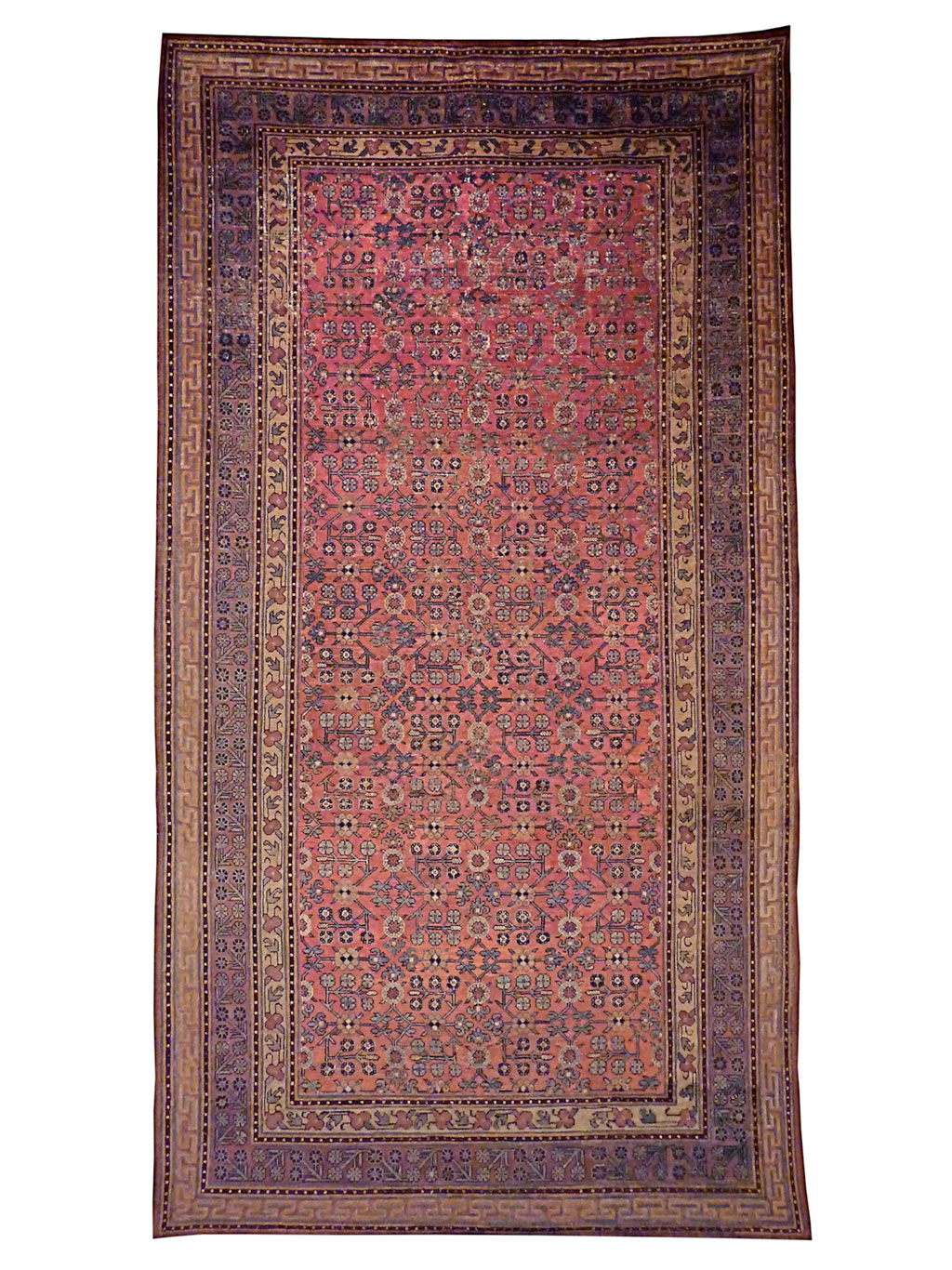Imperial Workshops of Xinjiang
China
Qing dynasty (1644-1911)
Qianlong period (1736-1795)
177 x 330 cm
Asymmetrical knot
Silk pile
Cotton warp and weft
Good condition, few areas of low pile,
some reknotted areas
Bibliography:
Victoria and Albert Museum. Department of Textiles.
Guide to the Collection of Carpets, London 1920
Provenance:
Kennedy Carpets, London
IMPERIAL CARPETS – THE MEANING OF FLOWERS
The dominant image present in the carpet is that of the flower, symbolic of the very essence of nature. In the Chinese language, the word flower, hua “花”, is formed by the character “化”, which indicates the transformations occurring in the plant world.
Emerging from the mud, lotus flowers were a highly regarded symbol of Buddhist purity and enlightenment. Almost all the superior divinities of Buddhism are shown in the standing position or seated upon flowering lotuses.
Bodhisattvas’ feet are held up by a lotus in memory of the legend that flowers bloomed at every step taken by Buddha; enlightenment is thus associated with a carpet of flowers. A carpet bearing the lotus flower motif becomes in itself a transcendent vehicle between earth and heaven.







